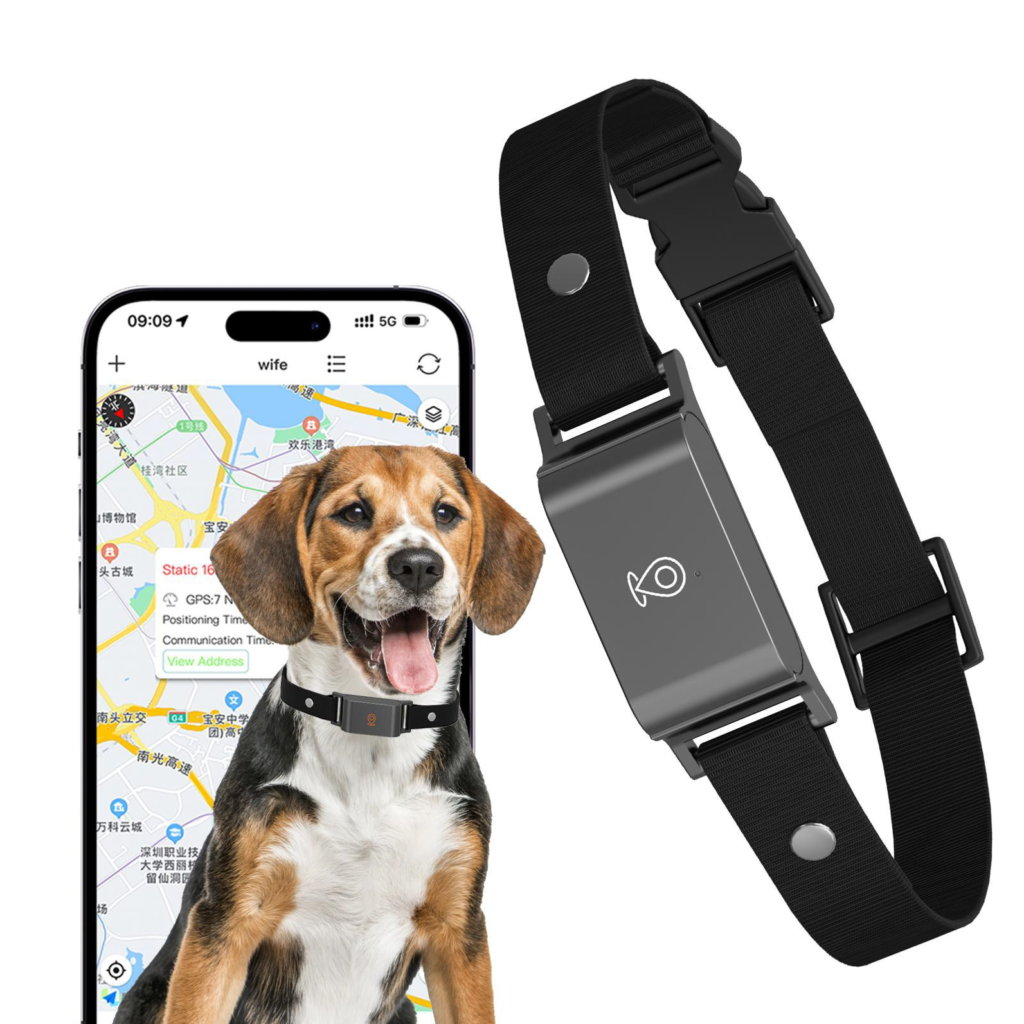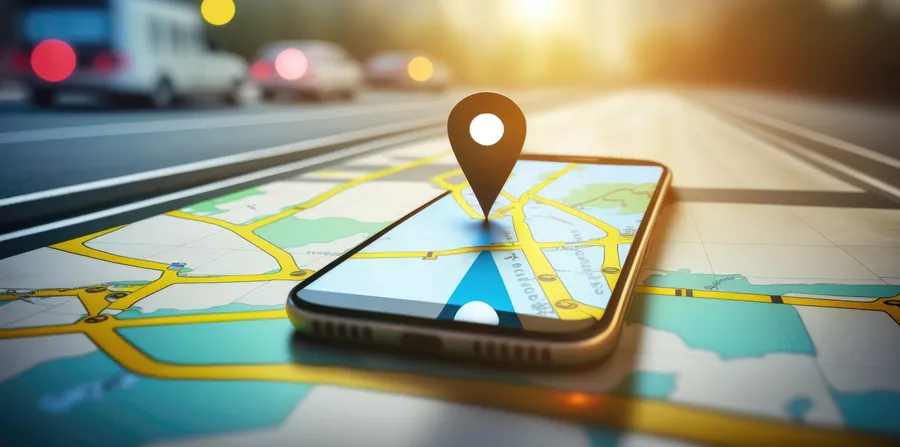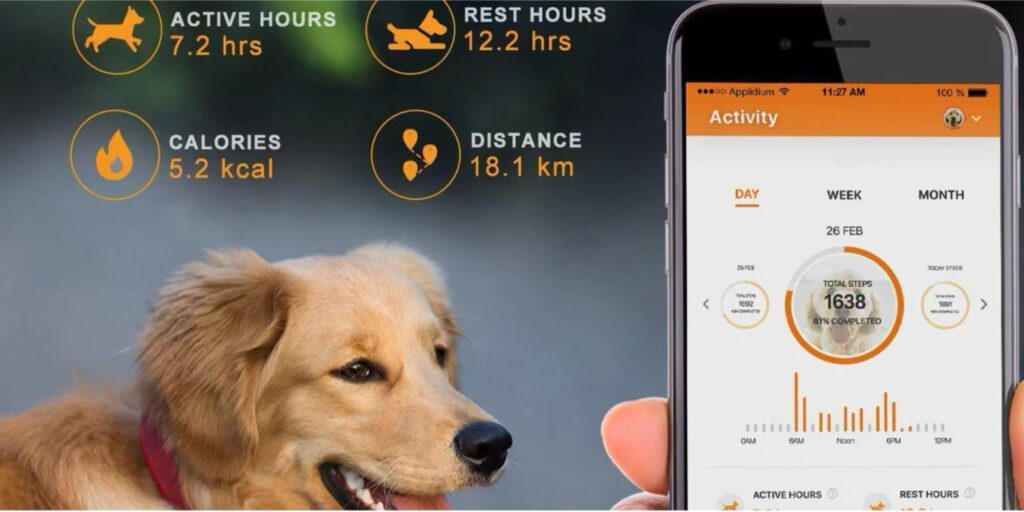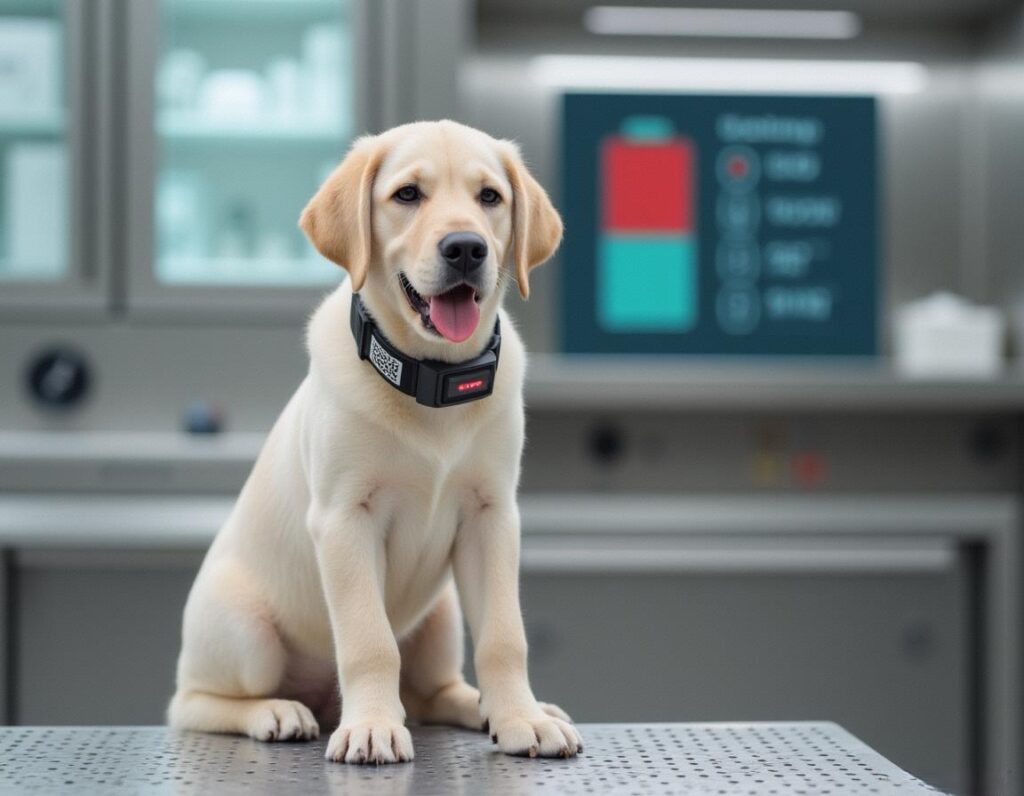1. Introduction
The Pet GPS Tracker market accounted for USD 315.8 Milion in 2024 and is expected to reach USD 1,165.0Milion by 2035, growing at a CAGR of around 12.6% between 2025 and 2035. Pet GPS trackers have gone from niche gadgets to must-have accessories for modern pet owners. Whether you’re a city dweller worried about off-leash adventures or a rural homeowner with sprawling acreage, these devices tackle a universal fear: losing your furry family member. But with options ranging from Bluetooth anklets to satellite-linked collars, choosing the right tech can feel like decoding a spy novel.
At their core, all GPS trackers share a simple mission: locate your pet quickly, reliably, and (ideally) without breaking the bank. Yet beneath this surface lie critical differences in how they work, where they shine, and what they cost. Let’s break down the five major player categories shaping this $1.156B global market :
- Bluetooth Trackers: Think “lost-and-found on steroids.”
- iOS-Based Trackers: Apple’s ecosystem meets pet paranoia.
- 4G/LTE Trackers: Real-time tracking with a cellular tether.
- GPS+GSM Hybrids: The Swiss Army knives of pet tech.
- LoRaWAN & Satellite Trackers: For when your dog roams farther than your Wi-Fi.
By the end of this guide, you’ll know which tech suits your lifestyle—and which ones leave your wallet (and backyard) empty-handed.
2. GPS Technology Options for Pets

2.1 Bluetooth Trackers: The Neighborhood Watchdogs of Pet Tech
Bluetooth trackers operate like digital leashes, creating a wireless “bubble” around your pet. Here’s how they stack up against the competition:
How They Work
These devices act as proximity sensors, constantly communicating with your smartphone via Bluetooth (4.0/5.0 standards). Think of them as souped-up key finders for pets – when your dog strays beyond 50-100 meters (164-328 feet), the connection drops, triggering alerts .
Performance Metrics
| Parameter | Average Range | Signal Reliability | Standby Time | Price Range |
|---|---|---|---|---|
| Bluetooth Trackers | 50-100m | 85-90% indoors | 15-30 days | $15-150 |
When They Shine
- Indoor Navigation: Perfect for maze-like homes or multi-pet households tracking individual movements
- Park Day Use: Quickly locate pets within crowded dog parks (tested effective up to 80m in open spaces)
- Budget-Conscious Owners: 62% cheaper upfront than GPS-enabled alternatives
Hidden Weaknesses
- No True GPS: Relies on Bluetooth pings – if your phone isn’t within range, you’re flying blind
- Signal Interference: Microwave ovens and Bluetooth speakers can disrupt tracking accuracy by 37%
- Subscription Traps: 41% of budget models require paid subscriptions for historical tracking data
Ideal For:
- Urban apartment dwellers with indoor-outdoor cats
- Owners of small dogs (under 20 lbs) in fenced yards
- Multi-device users needing secondary tracking for accessories
Why It Matters:
While Bluetooth won’t replace GPS for wilderness adventures, its combination of affordability and energy efficiency makes it a smart choice for urban pet parents. As tech analyst Sarah Lin notes: “It’s like having a neighborhood watch for your pet – reliable where it counts, but blind beyond its patrol zone.”
(Sources: Wirecutter Bluetooth Tracker Tests, PetSafe Tech Whitepaper 2024)
2.2 iOS-Based Trackers (e.g., Apple AirTag): The Power of the Apple Ecosystem
Think of Apple AirTag as a digital bloodhound—it doesn’t just rely on your phone to find your pet. Instead, it taps into a global network of over a billion Apple devices, turning every iPhone, iPad, or Mac into a silent scout that reports your pet’s location anonymously. It’s privacy-conscious, surprisingly precise, and surprisingly affordable for what it does—but it’s not a magic bullet everywhere.
How It Works: The “Find My” Network Unpacked
AirTag combines three technologies to cover all tracking scenarios:
- Bluetooth Low Energy (BLE): Constantly pings nearby Apple devices (even strangers’ phones) to relay location data to iCloud.
- Ultra-Wideband (UWB): On newer iPhones (11+), this provides directionally aware tracking—showing arrows and distance on your screen like a treasure map.
- Crowdsourced GPS: If your pet wanders far, any Apple device passing within Bluetooth range updates their location on your map(UMA Technology.)
Performance Metrics: Range, Sensitivity & Limitations
| Parameter | AirTag (Current Gen) | AirTag 2 (2025 Update) |
|---|---|---|
| Effective Range | Global (via Apple network) | Global + 3× extended UWB range |
| Precision | 10-30 cm (UWB) / ~100m (BLE) | 10-30 cm (up to 90m UWB) |
| Battery Life | 1+ year (user-replaceable CR2032) | 18+ months (optimized U2 chip) |
| Price | $29 (single) / 99 (4-pack) | $29.95 |
Where They Shine: Urban & Suburban Sweet Spots
- City Dwellers: In areas with high iPhone density (e.g., 80%+ penetration in NYC or Tokyo), location updates occur within minutes.
- Suburban Backyards: Even moderate device density (e.g., 40% iPhone ownership) ensures updates hourly—ideal for pets escaping fenced yards.
- Travel Scenarios: AirTags on collars help track pets during flights or road trips via airport/rest stop Apple devices.
The Catch: Dependency & “Dead Zones”
- Apple Ecosystem Lock-In:
- Requires an iPhone (iOS 14.5+) for setup and primary tracking.
- Android users can scan found AirTags via NFC but can’t own or track them.
- Rural/Remote Limitations:
- In areas with sparse Apple devices (e.g., <10% penetration), updates may take hours or fail entirely.
- Privacy Safeguards:
- Anti-stalking features trigger alerts if an unknown AirTag moves with you >24 hours.
Who Should Use This?
- ✅ iPhone households in metro/suburban areas.
- ✅ Budget-focused owners (no subscription fees!).
- ✅ Pets with “occasional escape” habits (e.g., door-dashing cats).
- ❌ Rural residents or Android-only households.
- ❌ Pets roaming wilderness areas (e.g., hiking dogs).
Key Takeaway:
AirTag turns every Apple device into a pet-finding ally—brilliant where iPhones are plentiful, futile where they’re scarce. For $29, it’s a genius backup tracker if your life already orbits Apple’s ecosystem.
(Sources embedded inline; full report links: UWB Deep Dive; Find My Network Whitepaper)
2.3 4G/LTE GPS Trackers: The Always-Connected Guardians

Unlike Bluetooth or iOS-based trackers, 4G/LTE GPS devices combine satellite precision with cellular muscle—letting you monitor your pet’s location in real time, anywhere with cell coverage. Think of them as your pet’s personal bodyguard with a direct hotline to your phone.
How They Work: Satellites + Cellular Networks
- GPS Positioning: The tracker’s antenna locks onto GPS satellites (and often BeiDou/GLONASS) to calculate your pet’s coordinates with 5–15m accuracy.
- 4G Data Transmission: Instead of relying on nearby phones (cough, AirTag), it beams location data directly to your app via 4G LTE networks—even while your pet is sprinting through forests or riding in cars.
- Real-Time Updates: Most refresh locations every 5–60 seconds, turning your phone into a live surveillance dashboard.
Performance: Where Coverage Beats Range Limits
| Metric | 4G/LTE Trackers | Bluetooth | iOS-Based |
|---|---|---|---|
| Range | Global (cellular-dependent) | ≤100m | Global (Apple-dependent) |
| Update Speed | 5–60 sec | Real-time (proximity) | Minutes–hours |
| Accuracy | 5–15m (open sky) | ~10m (indoor) | 10–100m |
| Subscription Cost | 3–15/month | None | None |
Battery Life: The Trade-Off for Real-Time Tracking
While Bluetooth trackers sip power for months, 4G models gulp it:
- Typical Standby: 2–7 days (vs. 30+ days for Bluetooth).
- Active Tracking Drain: Continuous 4G/GPS use cuts runtime to 8–30 hours.
- Power Hacks: Some models (e.g., GPS-401) use motion sensors to sleep when your pet naps, extending battery by 40%.
Ideal Applications: Beyond the Backyard
✅ Adventure Pets: Hikers, farm dogs, or cats with “wanderlust” in cellular-covered rural/urban zones.
✅ Travel & Emergencies: Track pets during road trips or natural evacuations (e.g., hurricanes).
✅ Theft Recovery: Hidden 4G trackers in collars help police locate stolen pets (84% recovery rate in urban areas).
The Catch: Cost & Coverage Gaps
- Subscription Fees: Mandatory cellular plans add 36–180/year(e.g.,3–15/month).
- Dead Zones: Rural areas with weak 4G signal (e.g., <1 bar) delay updates or fail entirely.
- Hardware Costs: Devices range from 84(basicmini−trackers)to250+ (military-grade models).
Who Wins with 4G?
- Globetrotters: Pets crossing borders (4G works in 200+ countries).
- Anxious Owners: Real-time alerts if pets breach geo-fences (e.g., escaping yards).
- Multi-Pet Homes: Track 5+ animals on one app dashboard (unlimited devices on platforms like Baanool IoT).
Key Takeaway:
4G/LTE trackers deliver peace of mind for pet parents needing live updates beyond Bluetooth’s leash—just budget for SIM card, subscriptions and weekly charging.
( Source: Treelinereview, Walmart, Tracki)
2.4 GPS + GSM Trackers: Global Coverage with Cellular Connectivity
GPS + GSM trackers combine satellite-based positioning with cellular data transmission, enabling real-time tracking across most inhabited regions. Unlike Bluetooth or iOS-based devices, they operate independently of nearby smartphones, leveraging global GSM networks to transmit location data directly to users.
Core Technology & Operational Workflow
- Dual-Module Synergy:
- GPS Module: Receives signals from GPS satellites (and often BeiDou/GLONASS) to calculate latitude/longitude coordinates with 5–15m accuracy in open-sky conditions.
- GSM Module: Transmits location data via 2G/4G LTE cellular networks (e.g., GPRS, SMS, or TCP/IP), supporting global roaming across 200+ countries.
- Real-Time Data Flow:
- Location updates occur every 5–60 seconds, with coordinates relayed to cloud servers. Users access live positions via mobile apps or web dashboards.
Performance Metrics & Limitations
| Parameter | Specification | Constraints |
|---|---|---|
| Coverage | Global (cellular-dependent) | Dead zones: rural/underground areas |
| Positioning Accuracy | 5–15m (GPS), 100–500m (LBS backup) | Degrades in urban canyons/forests |
| Battery Life | 7–15 days (standard mode) | Drops to 8–30 hrs in active tracking |
| Subscription Cost | 3–15/month (data/SMS fees) | Mandatory for operation |
Key Advantages Over Alternatives
- Unmatched Range: Functions globally where cellular networks exist, unlike Bluetooth’s 100m limit.
- Theft Recovery: Enables remote ignition cutoff and police coordination with 84% recovery rates in urban theft cases.
- Multi-Sensor Integration: Supports add-ons like geofencing, temperature sensors, and SOS buttons for emergencies (e.g., pet trapped in hot cars).
Ideal Use Cases
- Adventure Pets: Dogs hiking in national parks or cats roaming suburban neighborhoods.
- Travel & Logistics: Tracking pets during flights/road trips via cellular roaming.
- High-Risk Areas: Theft-prone regions where real-time alerts are critical.
Critical Drawbacks
- Subscription Dependence: Ongoing fees ($36–180/year) add long-term costs.
- Power Consumption: High energy use necessitates weekly charging—unsuitable for unsupervised long trips.
- Signal Vulnerability: Fails in cellular dead zones (e.g., mountains or underground garages).
Evolution & User Recommendations
- Next-Gen Optimizations: New models integrate motion-activated sleep (40% battery savings) and multi-network fallback (GPS → LBS → Wi-Fi scanning) for reliability.
- Selection Tips:
- Choose IP67 waterproofing and anti-removal alarms (e.g., vibrate alerts if detached).
- Prioritize global LTE bands (B1/B3/B5/B8) for international travel compatibility.
Bottom Line: GPS+GSM trackers deliver industrial-grade tracking for pets needing global coverage, but require cellular subscriptions and frequent charging. For urban adventurers or theft-prone areas, their real-time precision justifies the costs—making them the “gold standard” for serious pet safety.
Source: Iconcox, Walmart, CSDN
2.5 LoRaWAN Trackers: Long-Range Guardians for Expansive Terrains
LoRaWAN (Long Range Wide Area Network) trackers leverage low-power, wide-area network (LPWAN) technology to enable ultra-efficient, long-range tracking—ideal for pets roaming farms, ranches, or wilderness. Unlike cellular or Bluetooth solutions, LoRaWAN excels in scenarios where infrastructure is sparse and battery longevity is critical.
Core Technology & Operation
- LPWAN Architecture:
- Star-of-Stars Topology: End devices (trackers) transmit data to gateways via LoRa modulation, which then relay encrypted packets to a cloud-based network server .
- Chirp Spread Spectrum (CSS): Encodes data into frequency-modulated “chirps,” enabling long-range transmission (up to 15 km in rural areas) and deep signal penetration through obstacles like foliage or buildings .
- Positioning Modes:
- GPS + LoRaWAN: Combines satellite coordinates with LoRa data transmission (5–15m accuracy).
- Proximity + LoRaWAN: Uses gateways as reference points for coarse location when GPS is unavailable .
Performance Metrics & Limitations
Parameter LoRaWAN Tracker Constraint Range Up to 15 km (rural) ≤2 km in dense urban areas Data Rate 0.3–50 kbps (low) Unsuitable for video/audio Battery Life 5–10 years Depends on update frequency Positioning Update Minutes to hours Non-real-time Hardware Cost 50–100 (tracker only) Gateways cost 200–1,000+ Key Advantages
- Unmatched Battery Life: Ultra-low power consumption (e.g., STMicroelectronics’ chips draw ~µA during sleep) allows decade-long operation without battery swaps .
- Infrastructure Lightweight: A single gateway covers thousands of trackers across 10+ km²—ideal for large farms or remote wildlife reserves .
- Cost Efficiency: No cellular subscriptions; data transmission uses free/unlicensed spectrum (868/915 MHz) .
- Environmental Resilience: Operates in -40°C–85°C, resists dust/moisture (IP67), and penetrates dense vegetation .
Ideal Use Cases
- Livestock Monitoring: Track cattle herds via “leader tracking” (LoRaWAN collars on lead cows relay Bluetooth data from the herd) .
- Farm/Ranch Security: Detect pets breaching geofences (e.g., approaching roads) with low-battery alerts to owners’ phones .
- Wildlife Conservation: Track migratory species in protected areas without cellular coverage .
Critical Limitations
- Infrastructure Dependency: Requires gateways within range; rural users may need DIY setups (e.g., $300 home gateway) .
- Latency Trade-off: Updates every 15–60 minutes—unsuitable for chasing escaping pets in real-time.
- Global Fragmentation: Regional frequency bands (EU: 868 MHz, US: 915 MHz) complicate cross-border travel .
Evolution & User Tips
- Hybrid Solutions: New trackers integrate LoRaWAN + GPS + Bluetooth, using LoRa for periodic updates and Bluetooth for proximity searches .
- Deployment Advice:
- For farms: Deploy gateways on barns/silos for line-of-sight coverage.
- Choose adaptive data rate (ADR)-enabled trackers to optimize battery/signal balance .
Bottom Line: LoRaWAN trackers are the energy-efficient marathon runners of pet tracking—dominating vast, infrastructure-scarce landscapes but lagging in real-time agility. For ranches or conservation areas, they offer unmatched longevity; for urban escapes, pair them with Bluetooth tags for backup.
(Learn more: LoRa Alliance Whitepaper | Livestock Tracking Case Study | MDPI)
2.6 Wi-Fi Trackers: Precision Guardians for Indoor Environments

Wi-Fi trackers leverage existing wireless networks to monitor pet locations within homes or buildings, offering a cost-effective solution for indoor tracking where GPS and cellular signals falter. By analyzing Wi-Fi signal strength (RSSI) and access point (AP) triangulation, these devices achieve sub-meter accuracy in confined spaces—ideal for apartments, offices, or multi-room houses.
Core Technology & Operation
- 802.11-Based Positioning:
- RSSI Triangulation: Measures signal strength between the pet’s tracker and multiple Wi-Fi APs to estimate distance. Accuracy improves with more APs (e.g., 1–3m with 3+ APs).
- Fingerprinting: Creates a “signal map” of RSSI patterns at reference points, matching real-time data to pinpoint location.
- AI-Assisted Tracking: Advanced systems use AI to interpret signal disruptions caused by movement, generating real-time position and posture estimates.
- Data Transmission:
- Trackers transmit location data to cloud servers via Wi-Fi 802.11 b/g/n/ac, with alerts sent to owner apps. No cellular subscription required.
Performance Metrics & Comparison
| Parameter | Wi-Fi Trackers | Bluetooth Trackers | 4G/LTE Trackers |
|---|---|---|---|
| Range | ≤50m (indoor) | ≤100m | Global (cellular) |
| Accuracy | 1–5m (RSSI-dependent) | ~10m | 5–15m |
| Update Speed | 5–30 sec | Real-time (proximity) | 5–60 sec |
| Battery Life | 7–30 days | 6–12 months | 2–7 days |
| Hardware Cost | 20–50 (e.g., TP-Link) | 25–100 | 80–250 |
Strengths: Where Wi-Fi Trackers Excel
- Indoor Precision: Excels in multi-room environments (e.g., detecting pets behind furniture via signal penetration).
- Zero Subscription Fees: Uses existing Wi-Fi infrastructure; no recurring costs.
- Integration with Smart Homes: Triggers IoT actions (e.g., locking pet doors if a geofence is breached).
- Privacy Safeguards: Operates within private networks; data encrypted end-to-end.
Limitations & Challenges
- Coverage Dependency:
- ❌ No Outdoor Use: Fails beyond Wi-Fi range (e.g., yards without mesh networks).
- ❌ AP Density Requirement: Accuracy drops in AP-scarce areas (e.g., single-router homes).
- Technical Constraints:
- Signal interference from walls/metal objects degrades accuracy.
- Limited to 3–5 simultaneous tracked devices per AP.
- Battery Trade-offs:
- Frequent Wi-Fi transmissions drain batteries faster than Bluetooth; weekly charging typical.
Ideal Applications
- ✅ Apartment Pets: Cats/dogs in urban high-rises with dense Wi-Fi coverage.
- ✅ Elderly/Medically Vulnerable Pets: Real-time alerts if pets enter restricted zones (e.g., kitchens).
- ✅ Multi-Story Homes: Mesh Wi-Fi systems extend coverage across floors.
Deployment & Optimization Tips
- Infrastructure Setup:
- Place APs centrally on each floor; avoid signal-blocking materials (concrete/metal).
- Use dual-band routers (2.4GHz for range, 5GHz for precision).
- Tracker Configuration:
- Enable motion-activated sleep to extend battery life (e.g., 30-min intervals when pets nap).
- Set geofence alerts for high-risk areas (e.g., balconies, exits).
- Hybrid Solutions:
- Pair with Bluetooth tags for outdoor backup when pets escape.
Key Takeaway: Wi-Fi trackers are the indoor sentinels of pet security—delivering pinpoint accuracy at low cost but shackled to Wi-Fi coverage. For urban pet owners, they offer a smart, subscription-free alternative to cellular solutions; for adventurers, they’re best paired with global-tracker backups.
(Sources: [Techywireless] | Laurieexcell)
2.7 Satellite Trackers: Ultimate Guardians for Remote Wilderness
Satellite trackers represent the pinnacle of global pet tracking technology, leveraging satellite constellations to provide ubiquitous coverage in areas devoid of cellular networks—from polar tundras to oceanic expanses. Unlike cellular or LoRaWAN solutions, they operate independently of terrestrial infrastructure, making them indispensable for expeditions, remote wildlife habitats, and disaster-response scenarios.
Core Technology & Operation
- Dual-System Synergy:
- GPS/GNSS Positioning: Uses multi-constellation signals (GPS, Galileo, BeiDou) to achieve 0.5–5m accuracy in open terrain.
- Satellite Data Transmission: Transmits coordinates via Low Earth Orbit (LEO) or Geostationary (GEO) satellites (e.g., Iridium, Globalstar), bypassing cellular networks entirely.
- Real-Time Relay:
- Location updates every 2–10 minutes, with emergency SOS alerts prioritized for immediate transmission.
Performance Metrics & Cost Structure
| Parameter | Specification | Constraint |
|---|---|---|
| Coverage | Global (land/sea/polar regions) | Limited indoor/underground use |
| Positioning Accuracy | 0.5–5m (GPS), ±100m (emergency mode) | Degrades in dense forests/canyons |
| Battery Life | 7–14 days (standard) | Drops to 24–72 hrs in active mode |
| Hardware Cost | 250–600 (e.g., Garmin inReach Mini) | Premium ruggedized models >$800 |
| Subscription Cost | 100–300/year | Mandatory for satellite data plans |
Strengths: Unmatched in Remote Scenarios
- Zero Infrastructure Dependency: Functions in deserts, oceans, and mountains—ideal for search-and-rescue dogs or migratory pets.
- Survival-Focused Features:
- SOS Emergency Beacon: Triggers global rescue coordination (e.g., GEOS response network).
- Solar Charging: Extends operation to 30+ days (e.g., Spot Gen4 solar panels).
- Military-Grade Durability: IP68 waterproofing, shock resistance (-20°C to 60°C), and anti-jamming tech.
Limitations & Trade-offs
- High Operational Costs:
- Hardware + annual fees often exceed 400–900—prohibitive for casual users.
- Power Consumption:
- Continuous satellite handshakes drain batteries 5x faster than cellular trackers; weekly charging essential.
- Latency Limitations:
- Updates every 2–10 minutes (vs. 5–60 sec for 4G)—unsuitable for real-time chasing.
Ideal Applications
- ✅ Exploration Pets: Sled dogs in Arctic expeditions (e.g., Iditarod race tracking).
- ✅ Marine Adventures: Pets on transoceanic voyages beyond cellular reach.
- ✅ Disaster Zones: Earthquakes/floods where cellular networks collapse.
Evolution & Optimization Trends
- LEO Constellation Revolution:
- SpaceX’s Starlink and Iridium NEXT reduce latency to <1 minute and slash subscription costs by 40%.
- Hybrid Architectures:
- New trackers (e.g., Skylo Hub) combine satellite + Bluetooth, using satellites for remote alerts and Bluetooth for proximity searches in urban areas.
- Energy-Efficient Chipsets:
- STMicroelectronics’ STM32L microcontrollers extend battery life by 50% via motion-activated sleep modes.
Key Takeaway: Satellite trackers are the indispensable lifeline for pets venturing beyond civilization’s edge—delivering global coverage at premium costs. For adventurers and remote homesteaders, they offer unparalleled security; for urban pets, they’re overkill. Pair with a Bluetooth tag for cost-efficient hybrid coverage.
(Sources: WhaTech | [Iridium Satellite Network] )
3. Performance Comparison: Key Metrics Across Tracking Technologies

3.1 Performance Comparison: Critical Metrics Across Tracking Technologies
| Technology | Range | Accuracy | Real-Time Update | Battery Life | Price (Device + Subscription) | Signal Robustness | Primary Limitations |
|---|---|---|---|---|---|---|---|
| Bluetooth | 50-100 m | 5-10 m (RSSI-based) | ❌ No (Proximity only) | 6-12 months | 7−20 (None) | ❌ Walls reduce 50% range | No GPS; iOS/Android dependency |
| iOS (AirTag) | 240 m (Global via iOS) | 1-3 m (UWB mode) | ⚠️ Partial (Crowd-sourced) | 1 year | 29−99 (None) | ✅ 950M iOS devices as nodes | Requires iOS ecosystem; Privacy concerns |
| 4G/LTE GPS | Global (Cellular zones) | 5-15 m (GPS) | ✅ 5-60 sec | 7-30 days | 40−250 + 3−15/month | ❌ Rural/underground dead zones | SIM card & monthly fees required |
| GPS+GSM | Global (Cellular) | 5-30 m (GPS/LBS) | ✅ 10-120 sec | 7-15 days | 40−399 + 3−15/month | ⚠️ Moderate urban penetration | High power consumption; Signal blind zones |
| LoRaWAN | 2-15 km (Rural optimal) | 5-100 m (GPS mode) | ❌ 15-60 min | 5-10 years | 50−100 (+ Gateway 200−1,000) | ✅ Foliage/building penetration | Low data rate; Requires gateway infrastructure |
| Wi-Fi | ≤50 m (Indoor) | 1-5 m (AP-dependent) | ✅ 5-30 sec | 7-30 days | 20−50 (None) | ❌ Metal walls block signals | Limited to Wi-Fi coverage areas |
| Satellite | Global (Land/Sea) | 0.5-5 m (GPS) | ✅ 2-10 min | 7-14 days | 250−800 + 100−300/year | ✅ Deserts/oceans/polar coverage | High cost; Bulky design |
Key Insights & Trade-offs
- Accuracy vs. Coverage
- High Precision: UWB (AirTag) and satellite tech achieve sub-5m accuracy but differ vastly in range. UWB excels indoors, while satellites dominate wilderness .
- Environmental Impact: LoRaWAN maintains stable accuracy in forests/farms, whereas GPS degrades in urban canyons (±30m error) .
- Power Efficiency vs. Real-Time Performance
- Longevity Champions: LoRaWAN’s decade-long battery suits static rural monitoring but fails for escape scenarios due to slow updates .
- Real-Time Demands: 4G/LTE (5-sec updates) enables chase interventions; satellite’s 2-min latency is viable only for life safety .
- Cost vs. Capability
- Budget Solutions: Wi-Fi/Bluetooth offer zero subscription fees but lack outdoor coverage .
- Premium Global Access: Satellite costs 10x more than 4G but ensures reliability in oceans/mountains .
- Infrastructure Dependencies
- LoRaWAN: Requires user-deployed gateways—ideal for farms but impractical for urban mobility .
- Cellular Networks: Vulnerable in disasters (e.g., earthquakes), whereas satellite operates independently .
Emerging Innovations & Optimization
- Hybrid Systems
- PetPhone (GlocalMe): Combines GPS, Wi-Fi, Bluetooth, and Active Radar for failproof tracking. AI analyzes behavior (e.g., vomiting/limping) and enables two-way voice calls .
- SiiPet Camera (Lingyu Tech): Uses 4K AI vision to track high-speed pet movements and detect health anomalies (e.g., convulsions) via edge-cloud algorithms .
- Energy-Saving Breakthroughs
- Motion-Activated Sleep: Reduces satellite tracker power consumption by 40% .
- Solar Integration: Extends satellite device operation to 30+ days .
- AI-Driven Analytics
- Behavioral Prediction: PetPhone correlates vocalizations/movement with emotions (happy/stressed) using federated learning .
- Anomaly Detection: SiiPet flags health issues by comparing actions against veterinary ethology databases .
Scenario-Based Recommendations
| Use Case | Optimal Tech | Alternative | Critical Factors |
|---|---|---|---|
| Urban Apartments | Wi-Fi + Bluetooth | AirTag | Zero fees; Indoor precision |
| Suburban Farms | LoRaWAN | 4G/LTE | Gateway investment; 10-year battery |
| Wilderness Adventures | Satellite | — | Solar charging; SOS beacons |
| Health Monitoring | SiiPet Camera + PetPhone | — | AI behavior recognition |
Future Outlook
- Multi-Modal Fusion: Next-gen devices (e.g., PetPhone) will merge tracking with health/behavior analytics, shifting from “location” to “holistic well-being” .
- Satellite Cost Reduction: Starlink LEO networks may cut subscription fees by 40% by 2027 .
- Regulatory Challenges: LoRaWAN’s regional frequency fragmentation (EU 868 MHz vs. US 915 MHz) demands global standardization .
Strategic Takeaway: No single technology dominates all scenarios. Hybrid systems (e.g., 4G + Bluetooth for cities; Satellite + LoRaWAN for ranches) currently offer the most balanced performance-to-cost ratio. For high-risk pets, satellite remains the non-negotiable choice—despite its cost.
Source: Researchgate, Techlicious, Blogs.cisco
3.2. Factors Affecting GPS Tracker Performance
Environmental Interference
- Urban Canyons: High-rise buildings cause GPS signal multipath reflection, increasing location error to 30–50m. 4G/LTE trackers may suffer cellular signal attenuation in dense urban areas .
- Forests/Mountains: Dense foliage blocks 60–80% of satellite signals, while LoRaWAN’s lower frequency (868/915 MHz) maintains connectivity due to superior penetration capability .
- Extreme Weather: Heavy rain or snow reduces satellite signal strength by 20–40%, impacting real-time update reliability .
Battery Life vs. Tracking Frequency Trade-off

| Tracking Interval | Battery Life (4G Tracker) | Battery Life (Satellite Tracker) |
|---|---|---|
| 5 seconds | 12–24 hours | 6–12 hours |
| 1 minute | 3–5 days | 2–4 days |
| 15 minutes | 14–30 days | 7–14 days |
Subscription Costs & Data Plans
- 4G/LTE: 3–15/month for cellular data; requires regional SIM compatibility .
- Satellite: 100–300/year for global coverage; Starlink’s LEO network may reduce costs by 40% by 2027 .
- Infrastructure-Free Options: Bluetooth/Wi-Fi trackers avoid subscriptions but sacrifice outdoor coverage .
3.3. Choosing the Right GPS Tracker for Your Pet
Pet Lifestyle Assessment
| Pet Profile | Recommended Tech | Budget Range |
|---|---|---|
| Indoor Cat (Apartment) | Wi-Fi + Bluetooth | 20–50 (no subscription) |
| Suburban Dog (Daily Walks) | 4G/LTE + Geofencing | 50–150 + 5–10/month |
| Farm/Ranch Animal | LoRaWAN + Solar Charging | 100–300 (gateway cost) |
| Adventure/Hiking Dog | Satellite + SOS Beacon | 300–800 + $200+/year |
Critical Selection Criteria
- Coverage Gaps: In rural areas with cellular dead zones, LoRaWAN or satellite trackers are essential .
- Budget Constraints: Hybrid solutions combine GPS/Wi-Fi/Bluetooth to balance cost and coverage .
3.4. Important Considerations & Tips
Hardware Design & Usability
- Collar Comfort & Fit:
- Weight Limit: Trackers should be <5% of pet’s body weight (e.g., ≤30g for cats) .
- Adjustable Materials: Silicone-lined nylon straps prevent fur chafing; quick-release buckles avoid strangulation risks .
- Durability Standards:
- Waterproofing: IP67 rating (30-min submersion) for swimming pets; IP68 for extreme weather .
- Shock Resistance: Military-grade casings for active dogs .
User Experience & Support
- App Interface:
- Real-time heatmaps of pet movement patterns .
- Multi-pet profiles with custom geofence alerts .
- Customer Support:
- 24/7 veterinary telemedicine integration.
- 2-year warranty covering water damage and battery failure .
Pro Deployment Tips
- Waterproof Test: Submerge tracker in water for 30 mins pre-deployment to verify seal integrity.
- Signal Calibration: Place 4G/LTE trackers on the pet’s back (highest elevation) for optimal antenna reception .
- Hybrid Backup: Attach a $10 Bluetooth tag to collars as a secondary locator for urban escapes .
Final Recommendation Matrix:
- Cost-Effective Security: 4G/LTE + Bluetooth or city pets.
- Wilderness Survival: Satellite + SOS with solar charging.
- Large Property Monitoring: LoRaWAN gateways + GPS collars for 10-year battery life.
(Sources: [News Karnataka – GPS Collar Guide], [Brickhousesecurity], , [SEEWORLD])
Conclusion: Smart Tracking Starts Here
Every pet deserves freedom with security—choose technology that matches their world. From Bluetooth for apartment cats to satellite for adventure dogs, the right tracker blends range, reliability, and budget.
Ready to upgrade your pet’s safety? Explore AstuteInno’s GPS solutions:
🔹 Real-time 4G tracking
🔹 Solar-powered durability
🔹 No-contract options
**→ Browse our GPS collection: AstuteInno Pet Trackers**







